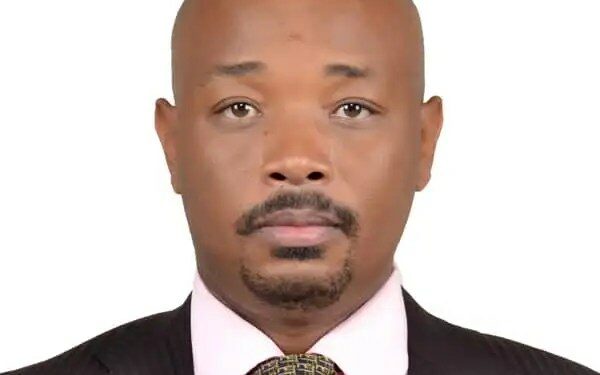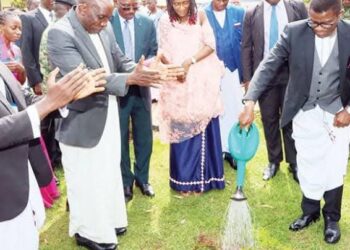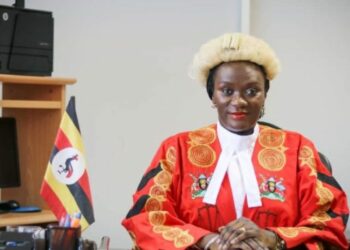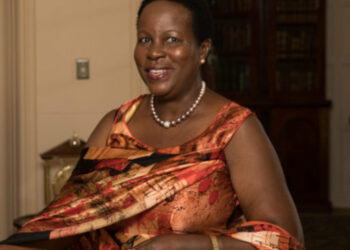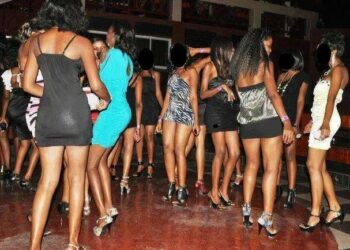I recently came across a piece of literature titled “Monumentalizing Africa’s Momentous Decade: Building Monuments and a Nation in Uganda written by and presented to the Program in Political and Social Thought at the University of Virginia by Mark M. Duerksen. Reading through that piece, I was able to understand that monument all over were left by the colonial master for secret reasons that many of us have taken for granted.
I personally had no idea there were hidden secrets behind the several monuments scattered all over Kampala and beyond but my focus was on Uganda’s Independence Monument. It had never occurred to me that beyond that historical sculpture are hundreds of untold secrets. The monument is located just at the foot of Sheraton Hotel. I had never paid much attention to this historical site until a visited the same a few days ago.
Looking at the monument, I could not help wondering how the unsheltered sculpture has survived the harsh weather conditions almost 63years later. What kind of materials did the artist use to carve this British funded symbol to survive all these years? The monument is clearly designed on a metal framework with a mother carrying a child raising the hand upwards in the sky; I hear which signifies freedom in Uganda.
Historians suggest that the Monument was part of celebrations to mark the Independence day on October 9, 1962 and signified a new born country let free from the bonds of colonization. We were told it was built by a Kenyan man called Gregory Maloba, a sculptor student of Makerere University school of Industrial and Fine art from 1939-1965. However, some historians have mistaken the name Gregory Maloba to Gregory Magoba.
The Monument has many secrets and interpretations and carries with it a religious message, hidden symbolism, evil significance, a political message and above all, it paints a hidden colonial message that many of us are not aware of or are aware of but fear to talk about. This monument was made from cement, sand, iron bars and wire mesh to fasten it together for posterity. On the face of it, the sculpture looks like a dead body disguised as a living being.
We were lied to that the Uganda’s Independence Monument was a significant symbol of the country’s liberation from British colonial rule. I hear the symbol represented the new beginning of an independent Uganda through the imagery of a woman holding a baby aloft, signifying a “new child” of freedom. On the contrary, the sculpture is a symbol of extended colonialism, bondage as Uganda was left tied in straps and special ropes that don’t wither.
To date, the monument still stands tall at King George V Jubilee. The monument measuring about 6 meters is a concrete sculpture which replaced another statute of King George V of Britain which used to be in that exact spot. We are told that the monument was unveiled by a one Kalule Settaala who was the then minister for culture and community development before the British handed over power to Ugandans to abuse.
But why is this monument so significant in Uganda’s history that it is emblazoned on all the paper denomination of 1000/= up to the 50,000/= and appears in many national promotional materials and documents. Those who regularly visit, rest or work at the site of the Monument can hardly relate the monument to Independence but just a sculpture at a freedom park. After all, the world war memorial monument was even older than the independence monument.
It downed on me that all of us could be signed up members of some cults as each of us at least moves about with any of the aforementioned denominations. On the face of it, all the features of the monument appear as we have been told but there more than meets the eye. There is a lot to learn about the sculpture as each and every part means something. It is some kind of a cult that many of us are associated with by default.
Why does the independence monument appears on every paper note yet there are so many others like the centenary monument, Sir Edward Mutesa 1 Monument, world war memorial monument, the statue of leadership, Sir Apollo Kaggwa monument, Mahatma Gandhi and the education monument among others. That is the reason why I consider the feature to be a cult and may have been imposed on Uganda without disclosing the underlying significance.
As already mentioned, the monument is designed on a metal framework with a mother carrying a child raising the hand upwards as a sign of freedom. On the monument, the mother stands firm on the ground having both legs positioned apart and straps around the legs and waist and at the same time she has “ropes” around the legs which in my view shows that Uganda is stuck and in a bondage making it hard to move from one place to another.
It does not matter that the child above the shoulders of the mother appears happy and is able to see beyond its present circumstances but the baby is helpless without the mother who is fastened with ropes and straps. The gesture that the ropes were falling off was not necessary as the monument was unveiled just a day to independence. The ropes and the straps should not have been used at all as this could mean Uganda was left tied never to move forward.
Forget about the argument that the monument speaks volumes of a free future generation where the present generation forsakes their freedom and comfort to lay a freedom foundation for those that come after them. On the contrary, it is the efforts of the current generation that shapes the future and the future is bleak without a foundation of the outgoing generation.
If the lifting of the arms by the child was intended to portray joy, well, that seems to have ended with the past regimes where leaders worked for their people. Maloba’s Monument these days stands for cries and could have been prophetic in its subtle suggestion that independent Uganda could be wailing just as easily as it could be ululating to welcome the unified nationalism that had driven out the colonial bondage around mother Uganda.
Immediately after independence, Obote’s strategy to present himself as the father-of the nation was to create a personality cult with the Independence Arch as its prime symbol, in which he offered himself as the medallion under which the various peoples of Uganda could rally. But regardless of the meaning of the Arch Obote intended, the kabaka and members of Kabaka Yekka, understood politics and monuments in the authoritarian manner of their British instructors, and interpreted Independence Arch as a symbol of despotic individualized.
Ironically, the Baganda’s suspicions of Obote’s Arch and their subsequent attempts to undermine Obote resulted in him seizing absolute power definitively in 1966 and the ensuing violent militarization of Ugandan politics. By then the adolescent Uganda that had grown out of in Maloba’s Independence Monument was wailing, as provincial politicians had neglected the child by failing to reflect on the meaning of the actual concrete child itself.
Our troubles began when Sir Edward Luwangula Muteesa II was pushed out by Apollo Milton Obote, then Idi Amin Dada overthrowing Obote, then Obote making a sabbatical return before he was replaced by Yusuf Kironde Lule, then Godfrey Lukongwa Binaisa, then Tito Okello Lutwa and finally Yoweri Museveni who took over power in 1986 and has since turned the country into a personal item. No records that I have been able to access describe the state of Maloba’s Independence Monument as a scare craw.
Wadada Rogers is a commentator on political, legal and social issues. wadroger@yahoo.ca
Do you have a story in your community or an opinion to share with us: Email us at editorial@watchdoguganda.com


